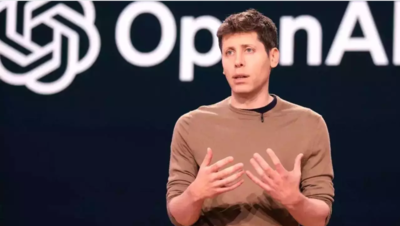
Sam Altman says AI now needs new hardware: How will the future of learning be affected by this?
In a recent revelation that marks a major turning point in the AI conversation, OpenAI CEO Sam Altman has declared that today’s computers are no longer ideal for the kind of artificial intelligence we need going forward.
While much of the world is still racing to keep up with ChatGPT and similar software tools, Altman is already thinking beyond screens, apps, and cloud servers.
He envisions a “third device”—something entirely new—that’s built from the ground up for AI.What makes this shift especially significant is that it isn’t just about improving technology—it’s about reimagining the way we interact with machines. These next-gen AI devices, Altman believes, will be deeply integrated into our daily lives, capable of understanding context, emotions, and personal preferences.
And nowhere might this transformation be more profound than in education.
How students could learn with AI-first devices
If Altman’s vision materializes, the traditional classroom could soon look and feel very different. Instead of learning through shared tablets or static digital lessons, students might have personal AI companions: wearable or portable devices that track their attention, understand their learning patterns, and offer real-time feedback.
These AI-native tools would go beyond what current edtech platforms can do. They wouldn’t just deliver content; they’d interpret emotional cues, detect confusion or boredom, and adapt instruction on the spot. One student might need a visual breakdown of a math problem, while another might benefit from a short quiz or verbal explanation; and the AI would know the difference without being prompted.For teachers, this opens up entirely new possibilities.
With a classroom full of AI-assisted learners, educators could get data-driven insights into how students are progressing and where they’re struggling, allowing them to focus more on mentorship, creativity, and human connection.
What’s promising about this vision
At the core of this evolution is the idea of personalization: something that’s long been considered the holy grail of education. AI-powered hardware could finally make it possible to tailor learning to each student’s pace, style, and needs.Altman also touched on an important idea: trust. People tend to trust AI more when it truly knows them—when it feels like an extension of their thought process. For students, this could foster a sense of comfort and confidence, especially for those who may be shy to speak up in class or who require repeated reinforcement to grasp a concept.In this ideal version of the future, AI doesn’t replace teachers: it amplifies them.
It reduces the pressure of one-size-fits-all education and opens up more space for meaningful learning experiences.
The concerns we can’t ignore
Still, Altman’s bold vision brings with it a wave of tough questions, particularly around equity and privacy. Who will have access to these AI-native devices? If they become central to education, how do we ensure they don’t widen the digital divide?There's also the matter of student data. For AI to become hyper-personalized, it needs deep and constant input. How will schools protect sensitive information like learning difficulties, emotional patterns, and behavioral cues?Educator readiness is another hurdle.
Many teachers are only just becoming comfortable with AI-enhanced grading tools or lesson planning software. Managing a classroom filled with real-time, adaptive AI hardware will require entirely new training, as well as a shift in mindset—from being the central information source to acting more like a learning strategist or AI collaborator.
Will schools be ready for the next leap?
Altman’s prediction isn’t just about technology—it’s a cultural and institutional challenge.
If this shift happens, schools and colleges will need to rethink how they fund infrastructure, train staff, design classrooms, and even define success.It also raises an important philosophical question: should AI know students this deeply? The potential for insight is immense—but so is the responsibility.
A future that’s closer than it seems
As futuristic as Altman’s ideas sound, they’re not far-fetched. The pace of AI development over the past two years has outstripped many expert predictions.
What was once speculative—like generative AI writing essays or passing standardized exams—is now routine.If AI-native hardware becomes real in the next few years, education may become one of the first sectors to feel its impact. The question is: will we be ready?
Sam Altman has thrown down a bold marker for where AI is headed. Whether classrooms will follow, or lead, remains to be seen.

 4 hours ago
45
4 hours ago
45




























 English (US)
English (US)